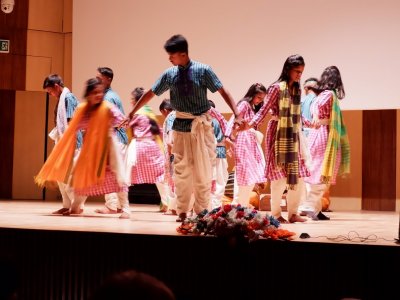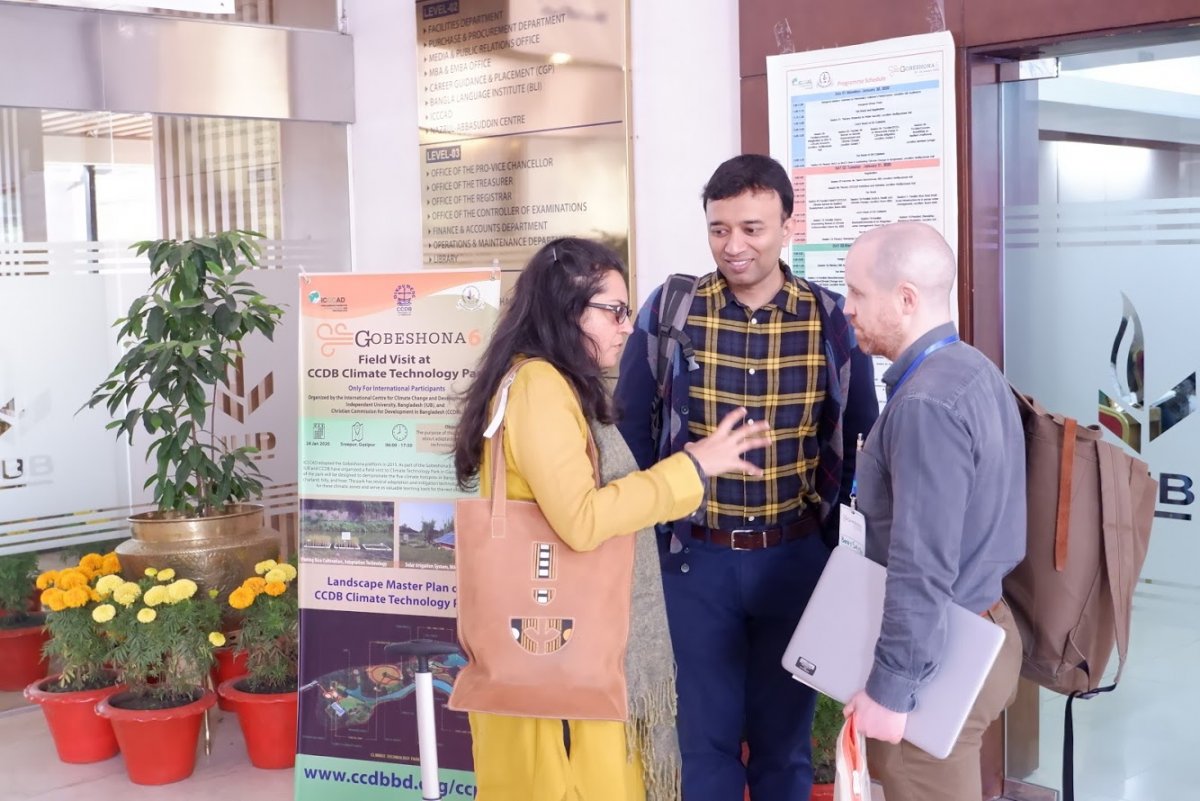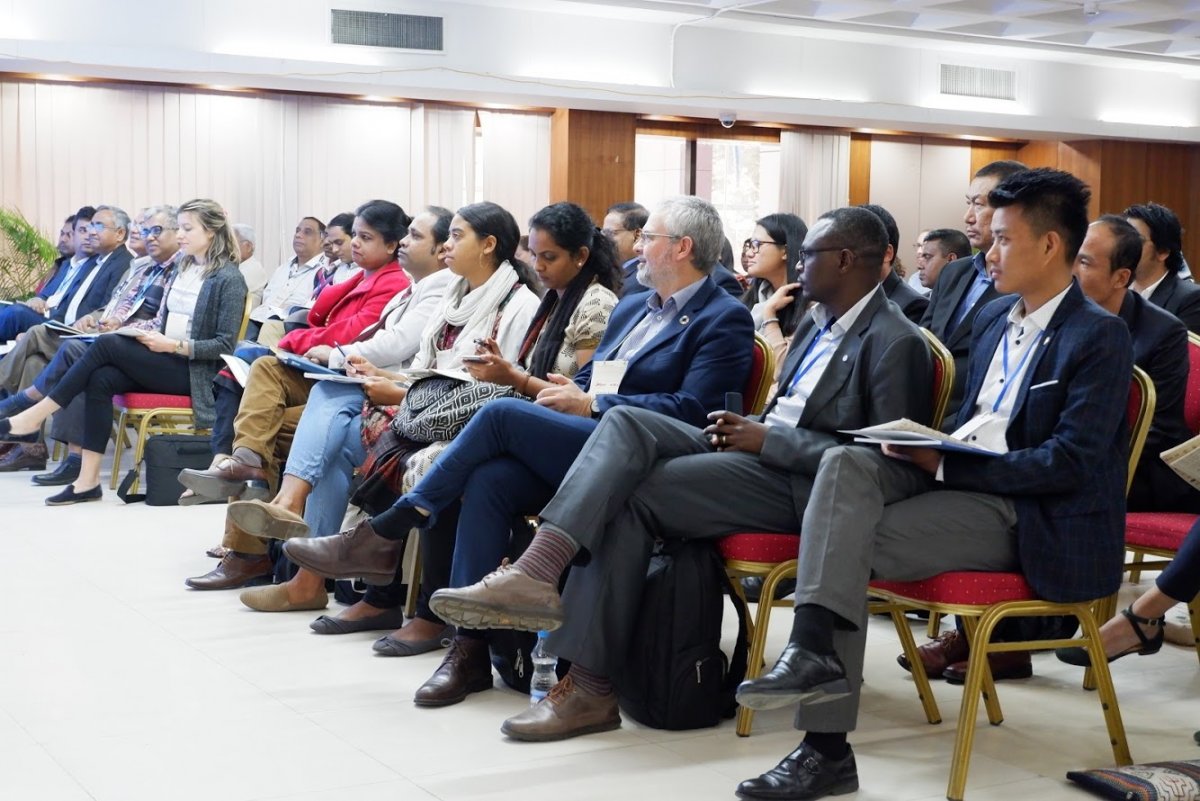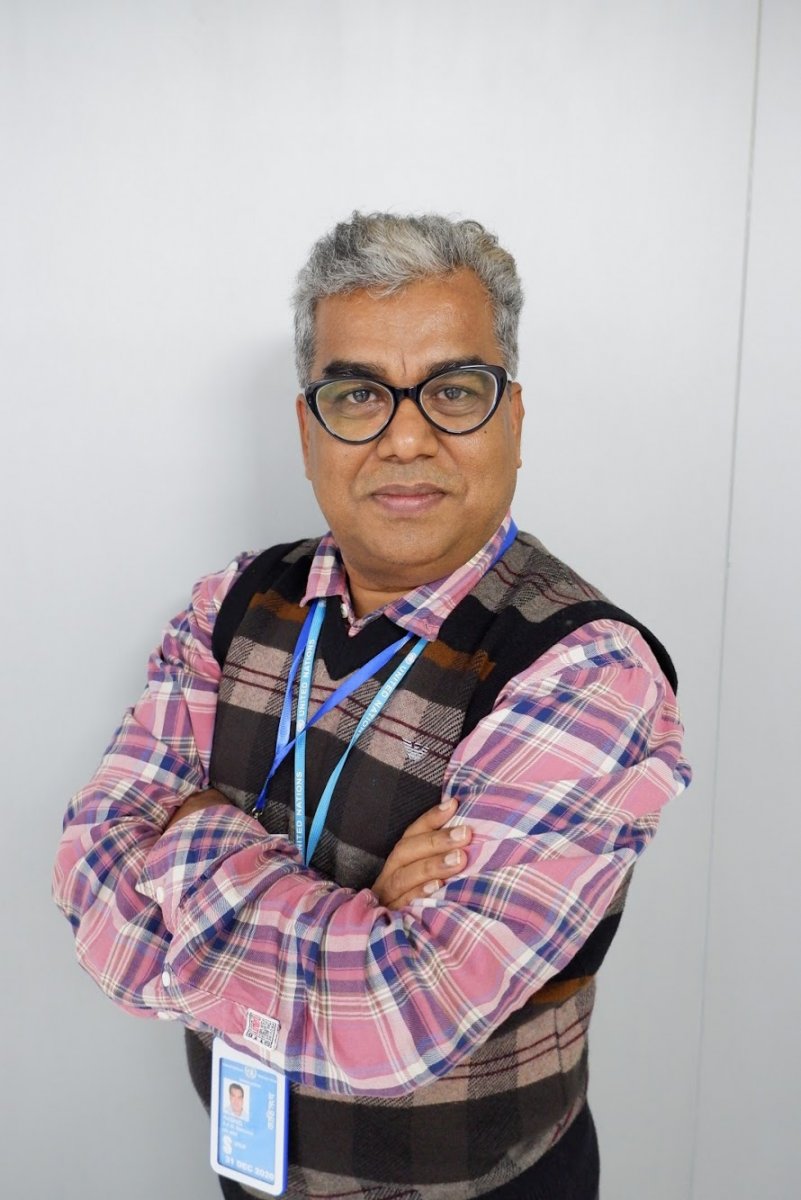Insights on adaptation planning from Gobeshona Conference, Bangladesh

Monday, 20 January, Dhaka, Bangladesh – “This week, Australia is on fire, it’s 23°C in Boston, it hasn’t snowed in Moscow yet and New Delhi is freezing at 1°C,” said H.E Mr. Chatterton Dickson - the British High Commissioner to Bangladesh – as he opened the sixth Gobeshona Conference in Dhaka.
Gobeshona’s objective is ‘to turn research into action’ and a side from holding the conference offers a knowledge sharing platform for climate research in Bangladesh. This was the sixth Gobeshona Conference in as many years, and more than 60 participants from research institutions, universities and international organizations came together to present and discuss climate research findings.
Global Commission on Adaptation’s Locally Led Action Track
The opening ceremony was dominated by two big announcements. Firstly a celebratory word for ICCCAD - the International Centre for Climate Change and Development – as it reaches its 10th birthday as one of the leading capacity building organisations in the climate change and development field in Bangladesh. Led by its Director, Dr. Huq, ICCCAD has been influential in shifting the focus of adaptation and resilience in Bangladesh towards in-country capacity building.
The second announcement was provided by Mr. Ban Ki Moon via video message, as he launched the Global Commission on Adaptation’s (GCA) Locally Led Action Track. This action track revolves around seven adaptation themes for the Year of Action in 2020 that emerged during the UN Climate Action Summit last September and outlined in a landmark report that accompanied the launch.
The United Nations Development Programme (UNDP) is a partner with the Global Commission on Adaptation and has committed to support the Locally Led Action Track, specifically through goals 1 and 3. The objective of goal 1 is for aid agencies and governments to significantly increase the quantity of devolved finance (that should be flexible, long term and risk-tolerant) for locally led adaptation action. Goal 3 is set up to ensure learning mechanisms are developed to support the capacities needed to plan, implement, innovate and evolve locally led adaptation practices by 2030. UNDP has an innovation grants platform that is developing with support of the adaptation fund, which will contribute also to these goals.
The GEF funded joint UNDP-UNEP NAP Global Support Programme has partnered with the Gobeshona Conference over the last three years. This year, the programme supported representatives from governments, municipalities and universities from five countries, come to Dhaka and share the lessons they’ve learned through navigating the NAP process with the other participants. At the conference, the programme organized a session on exploring science based approaches to adaptation planning with the LDC Universities consortium as well as collaborated with the GCA on the launch of the locally led action track.
The session on “Research and Policy Interface under NAP -GSP” clearly highlighted the key role research institutions play in the science-policy interface on climate change adaptation and the need for coordinated communication for a strengthened interaction between the scientific community and policy makers. Senior representative from Government of Bangladesh, representatives from Universities in Nepal, Uganda and Bangladesh presented their perspectives on tailoring the science of adaption with national policy needs and the need for an effective science-policy platform and the role of the NAP GSP in establishing a robust cooperative mechanism.
Key issues that emerged during the conference
Climate-induced migration is a reality in all regions, but with Dhaka’s population standing at around 21 million and predicted to reach around 27 million by 2030, it is a priority issue in Bangladesh. Dr. Huq referenced the launch of a human displacement programme, aiming to develop 20 towns that are “climate resilient and migrant friendly”. Some participants were keen to point out that urban planning and resilience will become increasingly reactive and less potent if proper adaptation measures aren’t already laying the groundwork.
 Unsurprisingly, capacity building also featured prominently in the discussions. Dr. Musa, the Executive Director of BRAC, an international development organization based in Bangladesh, applauded Gobeshona for the opportunities it provides for young scientists to work with planning commissions and ministries, allowing them to offer concrete inputs into Bangladesh’s adaptation processes. Bangladesh has also been working on a capacity building youth leadership programme with other LDCs. The new programme is a one-year mentorship with twenty youth participants from different universities giving them access to workshops on project management and policy dialogues.
Unsurprisingly, capacity building also featured prominently in the discussions. Dr. Musa, the Executive Director of BRAC, an international development organization based in Bangladesh, applauded Gobeshona for the opportunities it provides for young scientists to work with planning commissions and ministries, allowing them to offer concrete inputs into Bangladesh’s adaptation processes. Bangladesh has also been working on a capacity building youth leadership programme with other LDCs. The new programme is a one-year mentorship with twenty youth participants from different universities giving them access to workshops on project management and policy dialogues.
The success at which gender is being integrated into adaptation planning was also a frequently asked question. The Country Director of ActionAid Bangladesh, Ms. Farah Kabir said, “we need to consider the climate crisis impacts and what are its specific implications for women and girls, such as severe health implications. The Gobeshona Conference gives us the platform to look at different ideas and generate more data around gender and desegregated data.”
So how is Bangladesh progressing with its climate adaptation and mitigation planning?
The climate change specialist at UNDP’s Bangladesh office, Mr. Rashid explained that in Bangladesh the National Adaptation Plan is not a stand-alone process, but one that will feed into and integrate with other national plans. Currently the NAP is in its inception phase with priorities already identified. The first cycle of Bangladesh’s NAP will help solve the knowledge gap and ensure there is ample information to inform its climate resilience planning.

With COP26 approaching, and a new round of Nationally Determined Contributions (NDCs) expected from countries, Mr. Rashid explained a core focus of the adaptation planning process is that its alignment with Bangladesh’s NDC. This alignment will focus on three main areas: (1) win-win scenarios of increasing energy access through renewable energy; (2) using development finance to invest in mitigation where resilience and adaptation co-benefits arise as well; and (3) taking more ambitious action in sectors like transport and local energy.
Crucial to the success of these plans is finance. Bangladesh’s NDC includes a national investment plan on forestry and climate change, designed for locally led adaptation planning. But Mr. Rashid said for this plan to be successful all sides of the government and business sector need to be working together. For a while this wasn’t happening, but the Ministry of Environment developed a co-leadership approach that gave equal decision-making power to all necessary actors. This seems to have been successful and is an approach Bangladesh is advocating to be replicated across other LDC and middle-income countries.
Especially critical to the whole of government and whole of society approach is the full engagement of the ministry of finance and the central bank. These institutions have huge political power and economic influence that stretches throughout the private sector and whole economy. If they are engaged and have genuine buy into the climate change process, they can glue stakeholders together and finance will follow in their wake.
See this photo story for more information on how Bangladesh is tackling climate change.